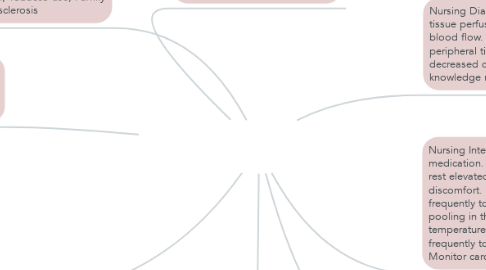Myocardial Infarction
by Jessica Navarrete

1. Pathophysiology: Occurs when a coronary artery becomes occluded following the rupture of an atherosclerotic plaque, which then leads to the formation of a blood clot. This event can also trigger coronary vasospasm. If a vessel becomes completely occluded, the myocardium normally supplied by that vessel will become ischemic and hypoxic. Without sufficient oxygen, the tissue dies.
2. Diagnostic Findings: Patient history, ECG, Cardiac enzymes and isoenzymes, LDH, Troponins, Myoglobin, Electrolytes (Imbalance of Na+ and K+), WBC, ESR, ECHO, Coronary Angiography
3. Risk Factors: Age, Gender (male), Dyslipidemia, Diabetes, Hypertension, Obesity, Sedentary life style, Alcohol overconsumption, Tobacco use, Family history of atherosclerosis
4. Clinical Manifestations: Chest pain, Shortness of breath, Indigestion, Tachycardia and Tachypnea, Catecholamine responses, and Fever
5. Expected Outcome: There is an absence of pain or ischemic signs and symptoms. Myocardial damage is prevented. Absence of respiratory dysfunction. Adequate tissue perfusion maintained. Anxiety is reduced.
6. Nursing Diagnosis: Ineffective cardiac tissue perfusion r/t reduced coronary blood flow. Risk for ineffective peripheral tissue perfusion r/t decreased cardiac output. Deficient knowledge r/t post-MI selfcare.
7. Nursing Interventions: Administer O2 and medication. Encourage bed rest with back rest elevated to help decrease chest discomfort. Encourage changing positions frequently to help keep the fluid from pooling in the lungs. Check skin temperature and peripheral pulses frequently to monitor tissue perfusion. Monitor cardiac rate and rhythm.
8. Treatment: Morphine, Oxygen, Nitroglycerin, Aspirin, Thrombolytics, Anticoagulants, Stool Softeners, Sedatives


